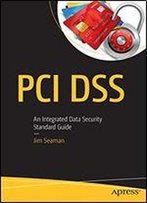
Health Informatics: A Patient-centered Approach To Diabetes
by William Aspray /
2010 / English / PDF
3.1 MB Download
The healthcare industry has been slow to join the information
technology revolution; handwritten records are still the primary
means of organizing patient care. Concerns about patient privacy,
the difficulty of developing appropriate computing tools and
information technology, high costs, and the resistance of some
physicians and nurses have hampered the use of technology in
health care. In 2009, the U.S. government committed billions of
dollars to health care technology. Many questions remain,
however, about how to deploy these resources. In Health
Informatics, experts in technology, joined by clinicians, use
diabetes--a costly, complex, and widespread disease that involves
nearly every facet of the health care system--to examine the
challenges of using the tools of information technology to
improve patient care. Unlike other books on medical informatics
that discuss such topics as computerized order entry and digital
medical records, Health Informatics focuses on the patient,
charting the information problems patients encounter in different
stages of the disease. [Chapters discuss ubiquitous computing as
a tool to move diabetes care out of the doctor's office,
technology and chronic disease management, educational gaming as
a way to help patients understand their disease, patient access
to information, and methodological and theoretical concerns.] We
need both technologists and providers at the drawing board in
order to design and deploy effective digital tools for health
care. This book examines and exemplifies this necessary
collaboration.
The healthcare industry has been slow to join the information
technology revolution; handwritten records are still the primary
means of organizing patient care. Concerns about patient privacy,
the difficulty of developing appropriate computing tools and
information technology, high costs, and the resistance of some
physicians and nurses have hampered the use of technology in
health care. In 2009, the U.S. government committed billions of
dollars to health care technology. Many questions remain,
however, about how to deploy these resources. In Health
Informatics, experts in technology, joined by clinicians, use
diabetes--a costly, complex, and widespread disease that involves
nearly every facet of the health care system--to examine the
challenges of using the tools of information technology to
improve patient care. Unlike other books on medical informatics
that discuss such topics as computerized order entry and digital
medical records, Health Informatics focuses on the patient,
charting the information problems patients encounter in different
stages of the disease. [Chapters discuss ubiquitous computing as
a tool to move diabetes care out of the doctor's office,
technology and chronic disease management, educational gaming as
a way to help patients understand their disease, patient access
to information, and methodological and theoretical concerns.] We
need both technologists and providers at the drawing board in
order to design and deploy effective digital tools for health
care. This book examines and exemplifies this necessary
collaboration.











